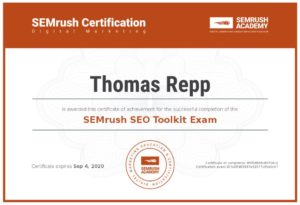 In the small to mid-size industrial world, everyone talks about the need for digital marketing. The problem? Most folks are still focused on vanity metrics … likes, followers, or impressions … when they should be measuring the real levers that strengthen their competitive advantage.
In the small to mid-size industrial world, everyone talks about the need for digital marketing. The problem? Most folks are still focused on vanity metrics … likes, followers, or impressions … when they should be measuring the real levers that strengthen their competitive advantage.
In today’s industrial marketplace, your content isn’t just a brochure. It’s a Digital Moat … a barrier that protects your market share from competitors, commoditization, and customer churn. But here’s the kicker ... a moat only works if it’s reinforced over time. And that means identifying, tracking, and improving the right performance indicators.
From my years working with industrial clients, I’ve seen three KPI metrics stand out as the true builders of a Digital Moat. They aren’t complicated, but they’re powerful. They tie directly to revenue and long-term customer relationships … two things your competitors can’t easily duplicate.
And for context, these KPIs were inspired in part by a recent Search Engine Journal article, “Ask An SEO: The Metrics That Matter for Content Strategies,” which highlighted performance-driven approaches that go well beyond vanity stats. I’ve adapted and expanded those insights here for the industrial B2B arena.
1. Email & SMS Opt-Ins (and the Revenue They Drive)
You can spend a fortune on Google Ads or LinkedIn promotions, but the moment you stop paying ... the leads stop coming. That’s why email and SMS opt-ins are so valuable …they’re a direct, owned channel to your B2B buyers..
In industrial B2B, the buying cycle is long. Decision-makers aren’t going to pull the trigger on a $50,000 piece of equipment after one click. But they will read your monthly insights, watch your videos on new manufacturing methods, and download your latest case study. Over time, this nurtures them into loyal customers.
How to measure it effectively:
- Track the number of opt-ins coming from each content source (web pages, videos, webinars, events, whitepapers).
- Measure the dollar impact of those contacts … sales generated, average order value (AOV), and lifetime value (LTV).
- Evaluate the specific assets driving the highest-value subscribers.
Digital Moat impact:
This is your home turf. No social media algorithm or search ranking can take it away. Every opt-in strengthens your market position and increases your leverage with prospects and customers.
2. Year-Over-Year (YOY) Traffic Growth—Branded & Non-Branded—with Conversions in Focus
Traffic growth is nice. Traffic growth with conversions is better. In the industrial world, this means your content is pulling in both branded searchers (people looking for your company by name) and non-branded searchers (people looking for solutions you provide but who don’t know you yet).
When branded search volume grows, it means your reputation is spreading. When non-branded search grows, it means your content is answering the questions people are actually asking … before they know who you are.
How to measure it effectively:
- Compare YOY traffic for branded vs. non-branded queries.
- Pair traffic data with conversion events … form fills, quote requests, demo sign-ups … to measure not just visits, but impact.
- Track repeat visits and multi-touch journeys (most industrial buyers visit your site multiple times before engaging).
Digital moat impact:
If your branded search grows year over year, you’re building mindshare. If your non-branded search grows, you’re increasing discoverability. Together, they make it harder for competitors to steal your buyers.
3. Direct Conversions from Content
Here’s where the rubber meets the road. It’s not enough for content to inform or entertain ... it needs to get someone to act.
Direct conversions happen when a prospect reads, watches, or engages with a specific piece of content and immediately takes the next step … whether that’s filling out a “Request a Quote” form, downloading a CAD file, or registering for a product demo.
How to measure it effectively:
- Use tracking tools to tie conversions to the exact content piece that prompted the action.
- Review “thank-you” page data to identify the highest-performing assets.
- Prioritize content updates on pages with proven conversion history.
Digital Moat impact:
Conversion-optimized content is more than marketing … it’s part of your sales system. Over time, these assets become an engine that consistently produces qualified leads. And the better it works, the more expensive it becomes for a competitor to replicate.
Why These Three KPIs Outperform Vanity Metrics
Likes and shares are fine for boosting your ego, but they don’t protect your market position. The three KPIs above are different … they tie directly to measurable growth, customer trust, and repeatable results.
Think of it this way:
- Email/SMS opt-ins are your company's private audience.
- YOY branded & non-branded traffic is your brand’s market influence.
- Direct conversions are your revenue engine.
Together, they build a Digital Moat that not only keeps competitors out, but also deepens your relationship with customers inside the walls.
Want to know more, go to What We Do or Contact Me in the menu above. Or give me a call at 269-375-0349.
Author:Tom Repp
A passionate marketer attempting to change the way industrial marketers leverage the web as a growth-oriented, lead generation machine. View all posts by Tom Repp





